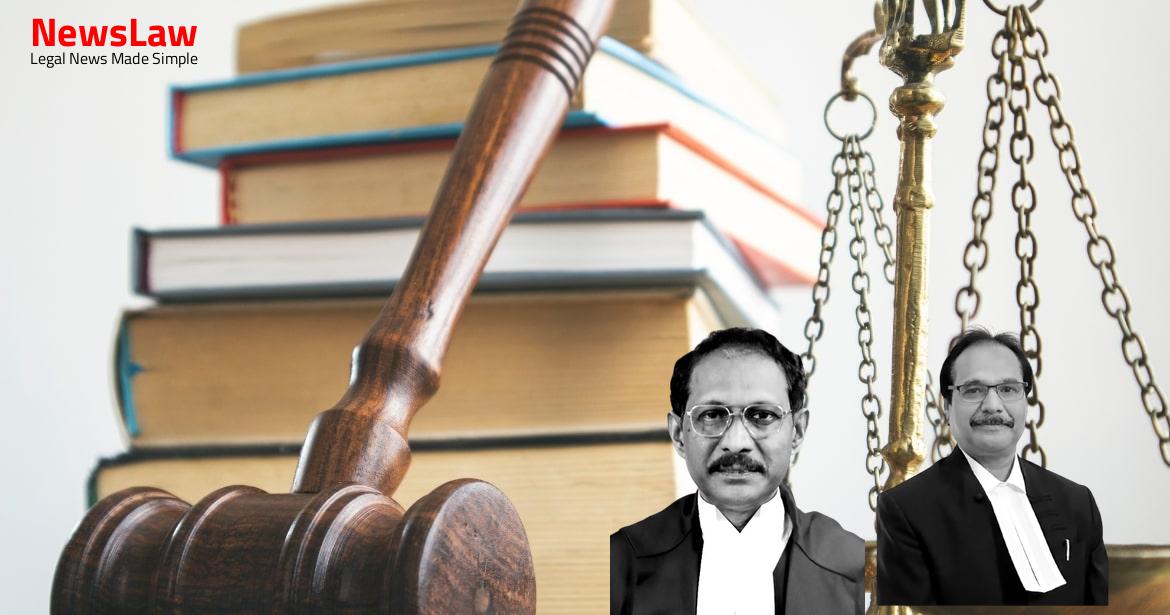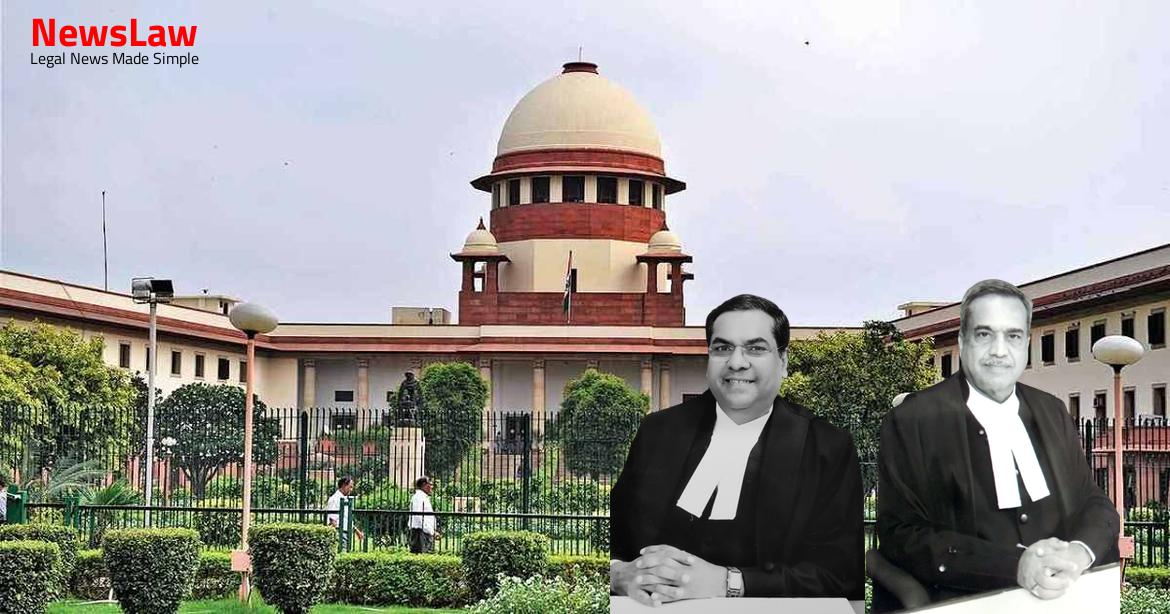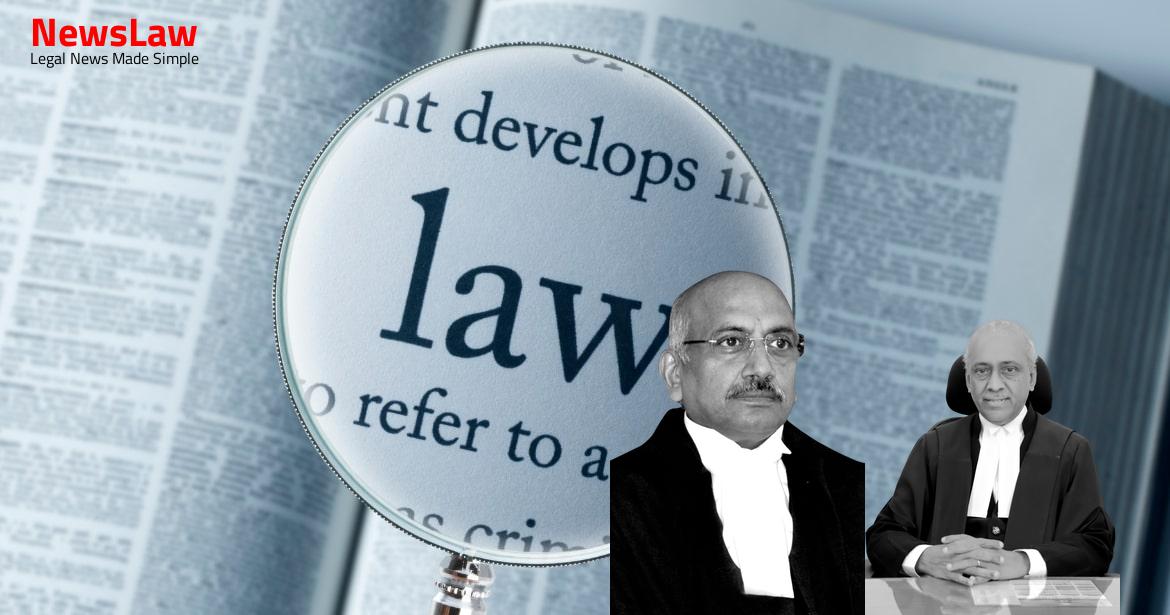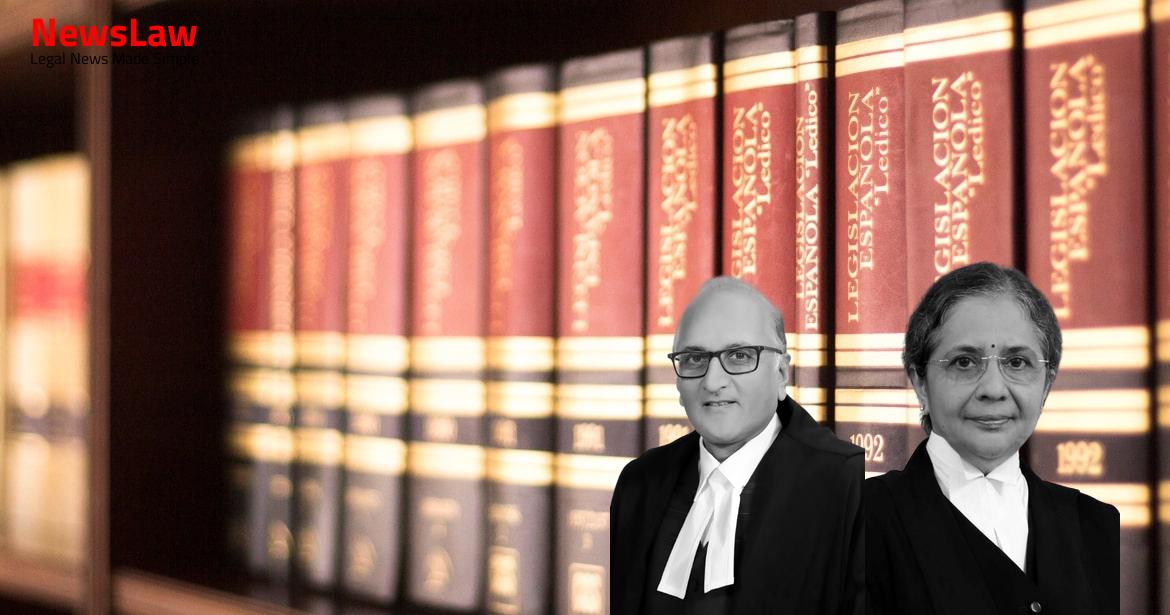In a recent landmark decision by the Supreme Court of India, the case of Enhancement of Sentence in the context of bigamy involving the Appellant and Accused Nos. 1 and 2 has been addressed. The Court deliberated on the severity of the offense and the necessity for proportionate punishment. Stay tuned to learn more about this crucial legal development.
Facts
- The appellant filed appeals against the acquittal of accused Nos.3 and 4 and for enhancement of the sentence of accused Nos.1 and 2.
- The appellant is the husband of the respondent in the former appeal and filed a private complaint against the respondents for the offence under Section 494 IPC.
- Accused Nos.1 and 2 did not challenge the conviction and chose to undergo the sentence imposed on them.
- The appeals filed by the appellant were dismissed by the court, resulting in the acquittal of accused Nos.1 and 2 and confirming the acquittal of accused Nos.3 and 4.
- The appellant filed further appeals against the acquittal of accused Nos.1 and 2 and the dismissal of his previous appeals, seeking to set aside the common order dated 19.04.2021.
- The appellant also sought enhancement of the sentence imposed on accused Nos.1 and 2, arguing that the current sentence is inadequate.
- Trial Court acquitted accused Nos. 3 and 4 (parents of first accused).
- First and second accused were convicted under Section 494 I.P.C.
- They were sentenced to undergo one-year rigorous imprisonment each.
- A fine of Rs. 2,000/- each was imposed on the first and second accused.
- In default of payment of fine, consequences would apply.
Also Read: Judgment on Custodial Death Case: Implications for Criminal Conspiracy
Arguments
- Senior counsel for the appellant argued that the trial Court properly evaluated the evidence on record
- The trial Court convicted accused Nos. 1 and 2 after ensuring the essential elements of the offense under Section 494 IPC were met by the appellant
- The High Court rightly considered the contentions of the appellant against the reversal of their conviction by the First Appellate Court.
- The reversal of the judgment of the First Appellate Court by the High Court under the impugned judgment was accepted by accused Nos.1 and 2.
- Accused Nos.1 and 2 had undergone the sentence imposed by the High Court after the reversal of the First Appellate Court’s judgment.
- Accused did not accept any compensation for the reversal of the judgment.
- The appellant did not want any compensation as per the submission of the learned senior counsel.
Also Read: Life Insurance Corporation of India vs. Narender Kumar Kantilal Modi – Legal Case Summary
Analysis
- The High Court of Bombay held that every confinement of a person and every restraint of liberty of free men is imprisonment in Bawa Singh’s case.
- The courts are required to mold the sentencing system to meet new challenges for maintaining social order.
- The punishment should be directly proportionate to the nature and magnitude of the offense to achieve the objectives of law.
- Undue leniency in sentencing can undermine public confidence in the criminal justice system.
- The court must award a proper sentence considering the offense committed, and it is the duty of every court to do so.
- The central role of proportionality in sentencing of offenders is repeatedly stressed by this Court.
- Meagre sentences based solely on the lapse of time without considering the seriousness of the offense are counterproductive.
- It is permissible to impose a sentence of ‘imprisonment till the rising of the court’ as recognized under Section 418(1) of the Criminal Procedure Code.
- The High Court did not restore the sentence under Section 494 I.P.C. imposed by the trial Court when it reversed the acquittal of Accused No.1 and 2.
- The appeal focuses on the deviation from the sentencing principle and seeks enhancement of punishment under Section 494 I.P.C. due to the lack of a minimum prescribed sentence.
- The seriousness of the offence under Section 494 I.P.C. is emphasized to determine if the imposed sentence is adequate.
- Consideration of factors like the nature of the offence, offender’s circumstances, and societal impact is crucial in sentencing.
- The judgment underlines the rule of proportionality in punishment for serious offences like Section 494 I.P.C. convictions.
- The court indicates that the ‘imprisonment till the rising of the court’ sentence imposed was excessively lenient, as the offence is viewed as serious.
- The High Court’s decision to impose imprisonment till rising of the court and a fine on Accused No.1 and 2 is challenged for its leniency.
- The legislative view on bigamy as a serious offence is highlighted through Sections 494 and 495 I.P.C.
- Focus is placed on the societal impact and judicial duty in imposing adequate sentences to maintain order and discourage criminal behavior.
- Referring to the decision in Gopal Lal v. State of Rajasthan, the court highlighted the gravity of the offence of bigamy.
- The court emphasized that in cases where bigamy is proven, leniency should not be entertained.
- The precedent set in the aforementioned case serves as a basis for taking a strict stance on the offence of bigamy.
- The offence of bigamy is compoundable only by the husband or wife of the person who entered into the subsequent marriage with permission of the Court.
- Under Section 494 I.P.C., concealing a former marriage from the person with whom the subsequent marriage is contracted can lead to imprisonment for up to ten years and a fine.
- This offence is an aggravated form of bigamy and is non-compoundable.
- Judicial discretion used to modify the sentence imposed under the impugned judgment.
- Child is currently about six years old, and the sentence for the conviction under Section 494 I.P.C. can be of both descriptions.
- Child born to the first and second accused was less than two years old when the trial Court passed the sentence.
- No minimum term of imprisonment is prescribed for the conviction under Section 494 I.P.C., with a maximum sentence of seven years.
- The trial Court balanced the sentence by fixing a one-year term as the corporeal sentence.
Decision
- The accused Nos. 1 and 2 are ordered to surrender before the trial Court to serve the unserved period of their sentence.
- The nature of the sentence for accused Nos. 1 and 2 under Section 494 I.P.C. is modified to six months each of simple imprisonment.
- The first accused must surrender after serving the sentence and within 2 weeks after the release of the second accused.
- The fine imposed on accused Nos. 1 and 2 is reduced from Rs. 20,000/- each to Rs. 2,000/- each.
- The default sentence of three months simple imprisonment for fine default is restored.
- The second accused is ordered to surrender within 3 weeks to serve the rest of the sentence.
- If accused Nos. 1 and 2 do not surrender voluntarily, the trial Court will take appropriate steps to enforce custody.
- If any amount has been deposited by accused Nos. 1 and 2, the balance after deduction will be refunded to them according to the law.
- The appeals are allowed with the modifications as mentioned.
Case Title: BABA NATARAJAN PRASAD Vs. M. REVATHI (2024 INSC 523)
Case Number: Crl.A. No.-002912-002912 – 2024



